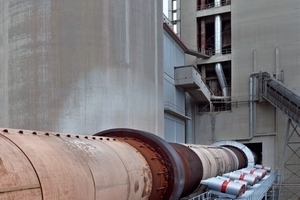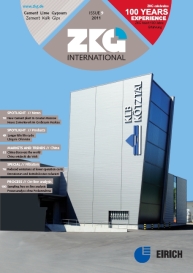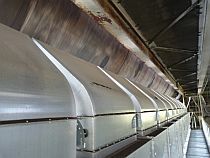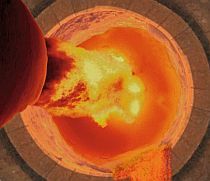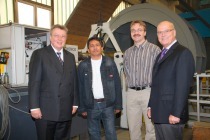Longer kiln life cycle
Ventilatorenfabrik Oelde GmbH (Venti Oelde) extends the lifetime of the refractory brick lining in kilns in the cement industry – by targeted cooling of the surface of rotary kilns.
During clinker production the kiln shell is subject to process-related high temperatures. The increasing use of secondary fuels, resulting in temperature changes in the kiln, affect the useful life of the refractory brick lining and can cause unwelcome stoppages. The result: production losses and repair costs.
Tried and tested
Venti Oelde is able to cool the kiln shell directly and effectively and thus to considerably extend the useful life of the refractory brick lining. Venti Oelde recently implemented an individually planned cooling system using axial-flow fans for SCHWENK Zement KG (Fig). „Investing in Venti Oelde‘s fan technology quickly pays for itself. Longer service life saves us repair costs and the stable build-up minimizes the risk of costly production shutdowns“, Armin Rüger, SCHWENK production manager, explains the decision for the efficient Venti concept.
Individual planning
Venti Oelde axial-flow fans directly cool the critical areas of the rotary kiln surface. In order to obtain the best possible results, Venti Oelde mounts the axial-flow fans on platforms next to the kiln. This arrangement can be stationary or mobile and the fans can be pivoted and also moved along rails. Via a scanner the kiln shell temperature is continuously measured and visualized in the control room. By optimizing fan positions and switching in individual fans, critical areas of the kiln surface can be directly cooled. „A decisive point, apart from the number of cooling fans, are the design, form and arrangement of the blast nozzles between cooling fan and kiln shell which are specific to the plant. This all means that cooling is effective and thus energy-efficient,“ specifies Norbert Vering, Dipl.-Ing., Dipl.-Wirt.-Ing., Sales Manager Fan Division at Venti Oelde. This individual consultation and coordination is a speciality of Venti Oelde. If wished, Venti Oelde will also equip the axial-flow fans with silencers so as to comply with acoustic requirements relating to the plant.www.venti-oelde.com

